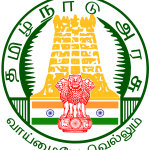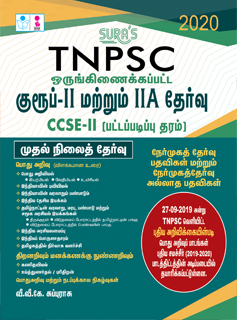1. When was the Bhamani Kingdom founded ?
A) 1325 B) 1437
C) 1347 D) 1341
Explanation : Ans : (C)
The Bahmani Kingdom (A.D. 1347-1538)
The Bahmani Kingdom was founded by Zafer Khan, who took the title of Ala-ud-din-Bahman Shah. He selected Gulbarga as its capital and renamed it Ahsanabad.
Muhammed Shah I (1538-1575 A.D.): He carried out many administrative reforms. He split the kingdom into four divisions called ‘Tarafs’ or provinces each under the charge of a Governor called ‘Tarafdar’. He also made a practice to tour one taraf every year accompanied by its tarafdar.
Firuz Shah (1397-1422 A.D.): He went on war with Vijaynagar on three occasions and lost Raichur Doab. The last year of his reign marred by a quarrel with Gesu Daraz, the sufi saint of Gulbarga.
Ahmad Shah Wali (1422-1435 A.D.): He shifted his capital to Bidar. He waged a successful war against Vijaynagar and pushed back an invasion from Malwa.
Humayun Shah (1458-1461 A.D.): He appointed Mahmud Gawan as his prime minister. Gawan initiated many reforms. He subdivided each of the four tarafs into two and curtailed the power of the tarafdars. The measures were resented by the Deccani nobles. On the basis of a forged letter, Sultan Samsud-din-Muhammad ordered the execution of Mahmud Gawan without an enquiry.
Mahmood Shah (1482-1518 A.D.): The murder of Mahmud Gawan heralded the breaking up of the Bahmani Kingdom. Court faction was intensified and the empire was finally split into five sultanates of Deccan. With the death of Kalimullah, the last ruler, the kingdom came to an end.
Bahmani Succession States
BIDAR: The Barid Shahi of Bidar was founded by Amir Ali Barid in 1538 A.D. He died in 1542 A.D. His son Ali Barid Shah distinguished himself by commanding the left wing of the allied armies in the battle of Krishna (Talikota). In 1619 A.D., Bidar was annexed by Ibrahim Adil Shah to Bijapur.
BERAR: The founder of the Imam Shahi dynasty was Fathullah Imadul Mulk in 1484 A.D. Berar was absorbed by Ahmadnagar in 1574 A.D.
AHMADNAGAR: The founder of Nizam Shahi dynasty was Malik Ahmad. He founded the city of Ahmadnagar and shifted his capital there from Junar. The importance of Ahmadnagar lies in the historic resistence offered by ‘Chand Bibi’ to Akbar’s son Murad, and the military as well as administrative skill of ‘Malik Amber’. Shahjahan annexed Ahmadnagar in 1636 A.D.
BIJAPUR: The founder of Adil Shahi dynasty was Yusuf Adil Shah in 1489-1490 A.D. Ibrahim Adil Shah II was a great patron of learning and was affectionately called ‘Jagad Guru’. Aurangzeb annexed it in 1686 A.D.
GOLCONDA: The founder of the Qutab Shahi dynasty was Quli Qutb Shah, a Turkish officer of Muhammad Shah Bahman. Golconda was annexed to the Mughal empire by Aurangzeb in 1687.
2. Consider statement and Reason, choose the correct answer from the codes below :
Assertion (A) : Federal state is guided by strong desire for national unity.
Reason (R) : It is developed out of necessity for union of independent states
Select the correct answer :
A) Both (A) and (R) are true and (R) is the correct explanation of (A).
B) Both (A) and (R) are true but (R) is the correct explanation of (A).
C) (A) is true, but (R) is true.
D) (A) is false, but (R) is true.
Explanation : Ans : (A)
The term ‘federation’ is drived
from a Latin word foedus which means ‘treaty’ or ‘agreement’. Thus, a
federation is a new state (political system) which is formed through a treaty
or an agreement between the various units. The units of a federation are known
by various names like states (as in US) or cantons (as in Switzerland) or provinces
(as in Canada) or republics (as in Russia).
A federation can be formed in two ways, that is, by way of integration or by way of disintegration. In the first case, a number of militarily weak or economically backward states (independent) come together to form a big and a strong union, as for example, the US. In the second case, a big unitary state is converted into a federation by granting autonomy to the provinces to promote regional interest (for example, Canada). The US is the first and the oldest federation in the world. It was formed in 1787 following the American Revolution (1775–83). It comprises 50 states (originally 13 states) and is taken as the model of federation. The Canadian Federation, comprising 10 provinces (originally 4 provinces) is also quite old—formed in 1867.
The Constitution of India provides for a federal system of government in the country. The framers adopted the federal system due to two main reasons —the large size of the country and its socio-cultural diversity. They realised that the federal system not only ensures the efficient governance of the country but also reconciles national unity with regional autonomy.
However, the term ‘federation’ has nowhere been used in the Constitution. Instead, Article of the Constitution describes India as a ‘Union of States’. According to Dr B R Ambedkar, the phrase ‘Union of States’ has been preferred to ‘Federation of States’ to indicate two things: (i) the Indian federation is not the result of an agreement among the states like the American federation; and (ii) the states have no right to secede from the federation. The federation is union because it is indestructible.
The Indian federal system is based
on the ‘Canadian model’ and not on the ‘American model’. The ‘Canadian model’
differs fundamentally from the ‘American model’ in so far as it establishes a
very strong centre. The Indian federation resembles the Candian federation (i)
in its formation (i.e., by way of disintegration); (ii) in its preference to
the term ‘Union’ (the Canadian federation is also called a ‘Union’); and (iii)
in its centralising tendency
(i.e., vesting more powers in the centre
vis-a-vis the states).
3. To check inflation Central Bank ………. the cash reserve ratio.
A) Increase
B) Decrease
C) Maintain the same level
D) Does not make any change
Explanation : Ans : (A)
Cash Reserve Ratio (CRR) : The commercial banks as per the statute has to maintain reserves based on their demand deposit and fixed deposit with central bank is called as Cash Reserve Ratio.
The Central Bank controls credit by changing the Cash Reserves Ratio.
If the CRR is high, the commercial bank’s capacity to create credit will be less and control the inflation.
If the CRR is low, the commercial bank’s capacity to create credit will be high and control deflation.
4. Which of the following gas was the reason for the Bhopal tragedy ?
A) CFC B) CO
C) CO2 D) MIC
Explanation : Ans : (D)
Bhopal gas tragedy : The Bhopal disaster, also referred to as the Bhopal gas tragedy, was a gas leak incident on the night of 2–3 December 1984 at the Union Carbide India Limited (UCIL) pesticide plant in Bhopal, Madhya Pradesh. It is considered to be the world’s worst industrial disaster. Over 5,00,000 people were exposed to methyl isocyanate (MIC) gas. The highly toxic substance made its way into and around the small towns located near the plant.
5. Which of the following devices makes use of piezo-electric property of a crystal ?
A) Wall clock
B) Atomic clock
C) Electronic clock
D) Quartz clock
Explanation : Ans : (D)
Piezoelectricity : Substances in which the dipole aligns itself in an ordered manner to produce a net dipole moment, exhibit piezo electricity and are known as piezoelectric substances.
(e.g) Quartz clock.






